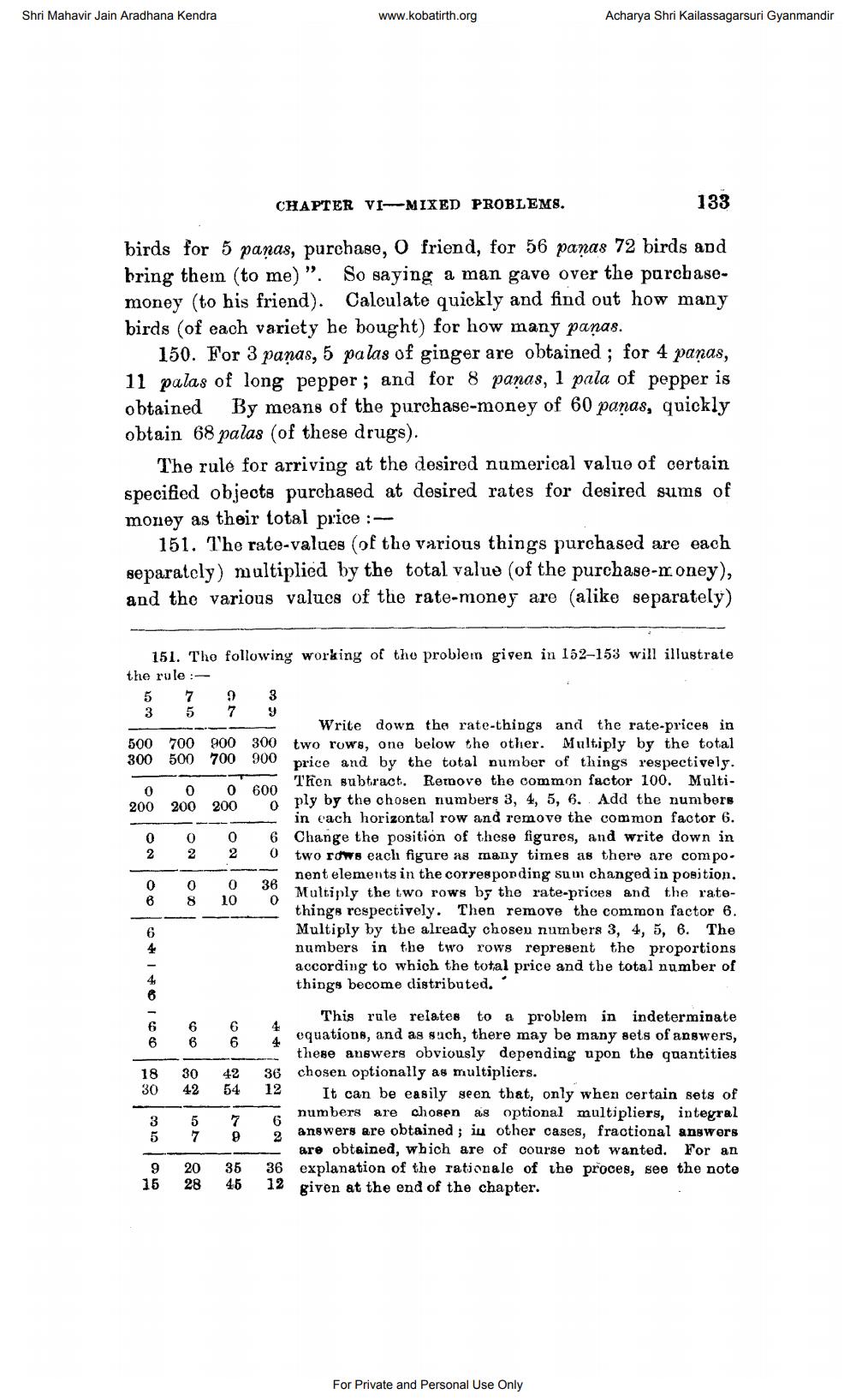________________
Shri Mahavir Jain Aradhana Kendra
www.kobatirth.org
Acharya Shri Kailassagarsuri Gyanmandir
CHAPTER VIMIXED PROBLEMS.
133
birds for 5 panas, purchase, O friend, for 56 panas 72 birds and bring them (to me)”. So saying a man gave over the purchasemoney (to his friend). Calculate quickly and find out how many birds (of each variety he bought) for how many paņas.
150. For 3 paņas, 5 palas of ginger are obtained ; for 4 paņas, 11 palas of long pepper; and for 8 panas, 1 pala of pepper is obtained By means of the purchase-money of 60 panas, quickly obtain 68 palas (of these drugs).
The rule for arriving at the desired numerical value of certain specified objects purchased at desired rates for desired sums of money as their total price :
151. The rate-values of the various things purchased are each separately) multiplied by the total value (of the purchase-money), and the various values of the rate-money are (alike separately)
151. The following working of the problem given in 152–153 will illustrate the rule :
5 7 9 3 3 5 7 9
Write down the rate-things and the rate-prices in 500 700 900 300 two rows, one below the other. Multiply by the total 300 500 700 900 price and by the total number of things respectively.
Then subtract. Remove the common factor 100. Multi0 0 0 600 200 200 200 0
ply by the chosen numbers 3, 4, 5, 6. Add the numbers
in each horizontal row and remove the common factor 6. 0 0 0 6 Change the position of these figures, and write down in
two rows each figure as many times as there are compo.
nent elements in the corresponding sumn changed in position, 0 0 0 36 6 8 10 0
Multiply the two rows by the rate-prices and the ratethings respectively. Then remove the common factor 6. Multiply by the already chosen numbers 3, 4, 5, 6. The numbers in the two rows represent the proportions according to which the total price and the total number of things become distributed."
6
6
6
4
CD
30 42
42 54
36 12
This rule relates to a problem in indeterminate equations, and as such, there may be many sets of answers, these answers obviously depending upon the quantities chosen optionally as multipliers.
It can be easily seen that, only when certain sets of numbers are chosen as optional multipliers, integral answers are obtained ; in other cases, fractional answers are obtained, which are of course not wanted. For an explanation of the rationale of the proces, see the note given at the end of the chapter.
e
5
7
9
2
9
20
35
36
For Private and Personal Use Only




